Posts Tagged: adult
They Didn't Get the Memo
They didn't get the memo. Summer is over. Fall is underway. Winter is coming (Dec. 21). But the Gulf Fritillaries (Agraulis vanillae) are still...
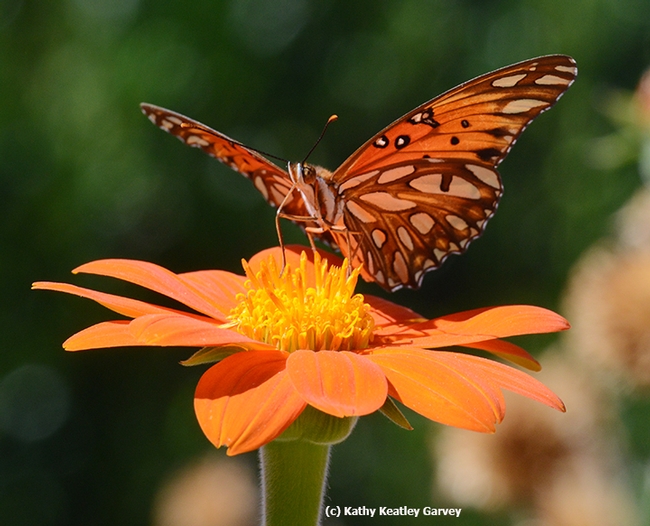
Gulf Fritillaries are still flying--and mating and laying eggs--in November. This one is nectaring on Mexican sunflower (Tithonia). (Photo by Kathy Keatley Garvey)
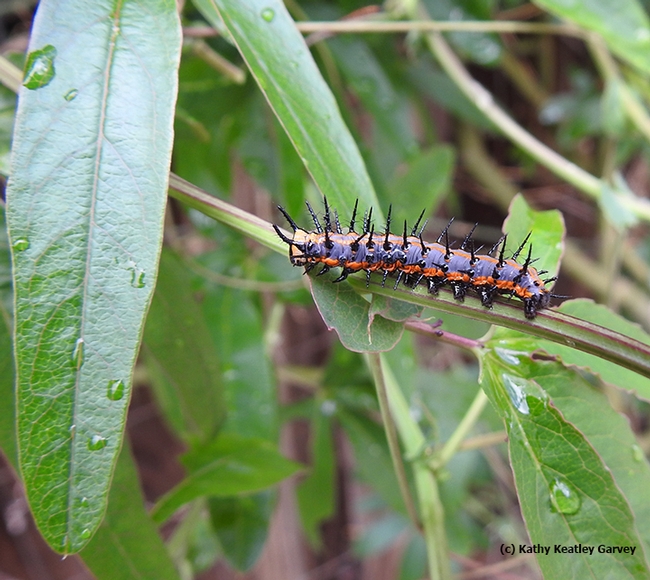
A Gulf Fritillary caterpillar in November. (Photo by Kathy Keatley Garvey)
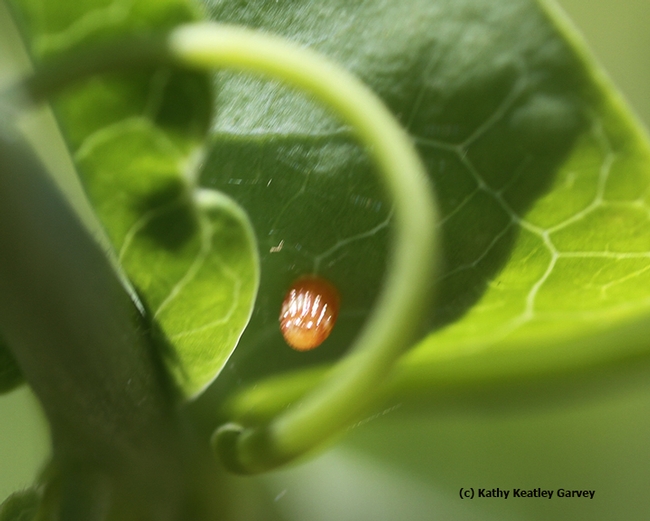
A tiny Gulf Fritillary egg. The egg is about the size of a sesame seed. (Photo by Kathy Keatley Garvey)
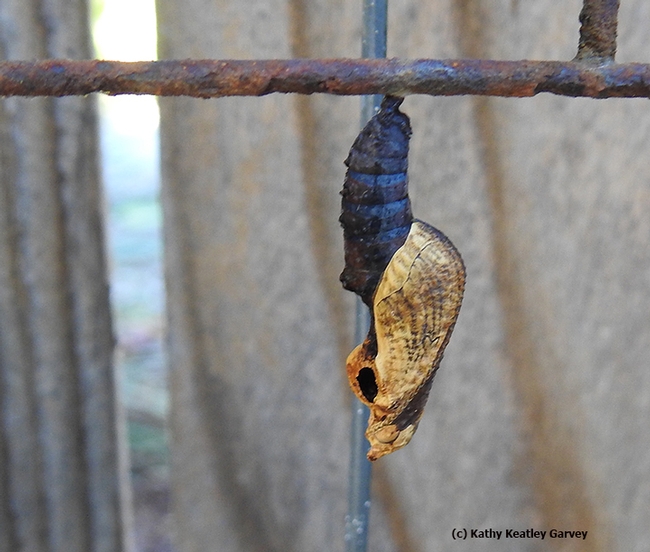
No Gulf Fritillary will ever eclose from this chrysalis. Note the parasitoid hole. It was a large parasitoid--a big tachinid fly or an ichneumonid or wasp--says Art Shapiro, UC Davis distinguished professor of evolution and ecology. (Photo by Kathy Keatley Garvey)
The Unseen World of Gulf Fritillaries
Let's celebrate the Gulf Fritillary (Agraulis vanillae). If you have a passionflower vine (Passiflora) in your yard, you've probably seen these...
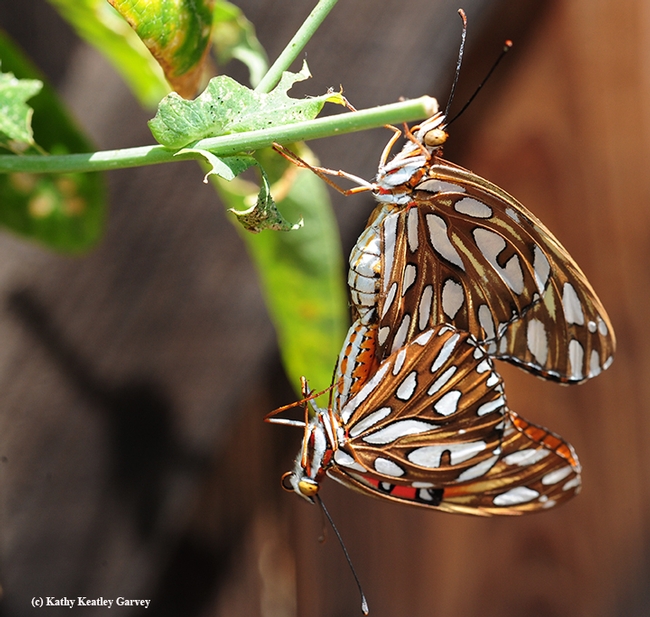
Gulf Fritillaries mating in the passionflower vine. (Photo by Kathy Keatley Garvey)
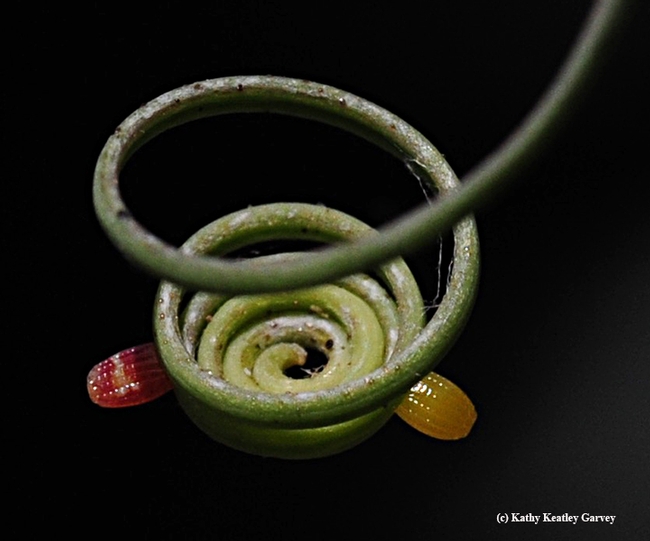
A newly laid Gulf Frit egg (on right) and an older Gulf Frit egg on the left. The egg is about the size of the period at the end of this sentence. (Photo by Kathy Keatley Garvey)
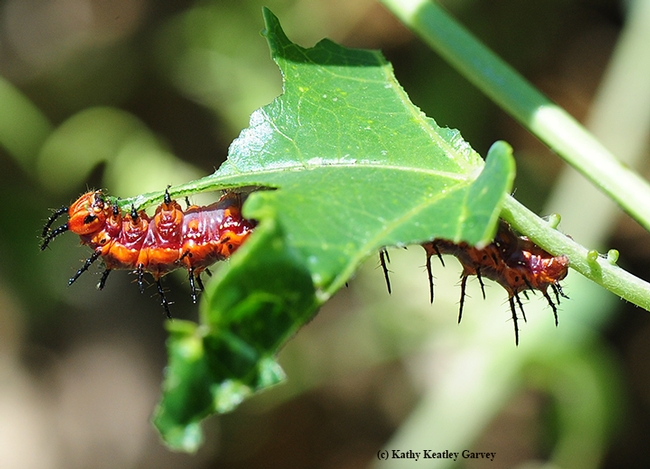
A hungry caterpillar getting its fill of passionflower vine, Passiflora. (Photo by Kathy Keatley Garvey)
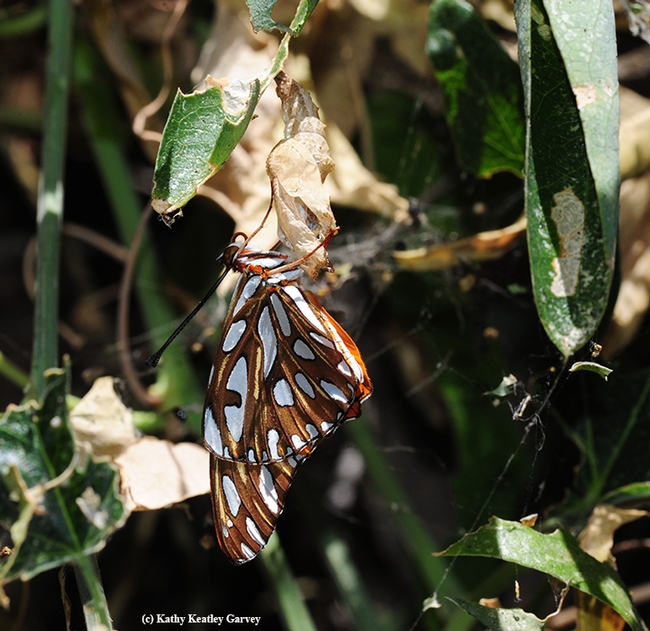
A newly eclosed Gulf Fritillary hangs onto its chrysalis. (Photo by Kathy Keatley Garvey)
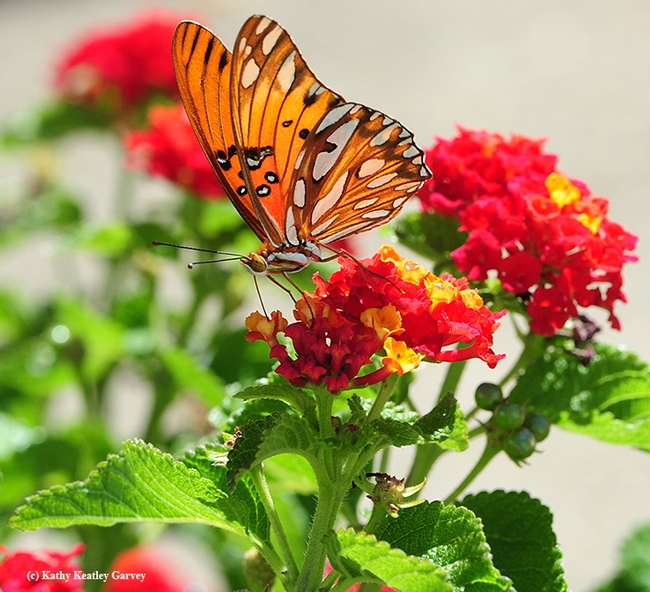
A Gulf Fritillary, Agraulis vanillae, sips nectar from Lantana. (Photo by Kathy Keatley Garvey)
Insect Art in the Garden
If you look closely, you'll not only see the cycle of life in your garden, but art as the center of life. Take the Gulf Fritillaries. They're a...
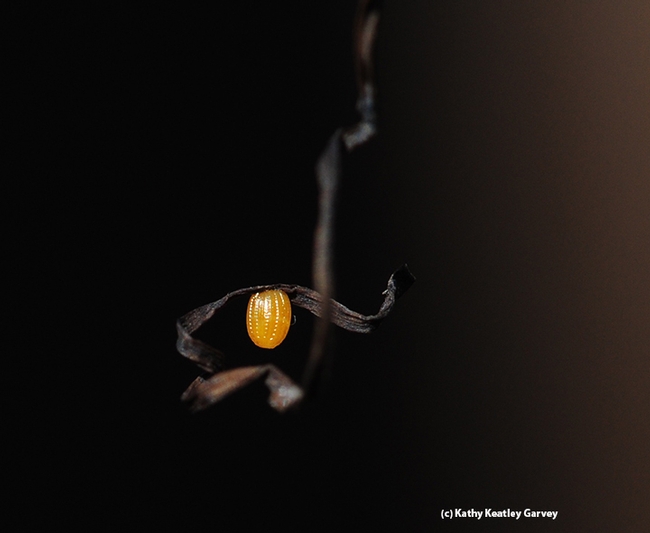
The tiny yellow egg of a Gulf Fritillary glows in the early morning sun. (Photo by Kathy Keatley Garvey)
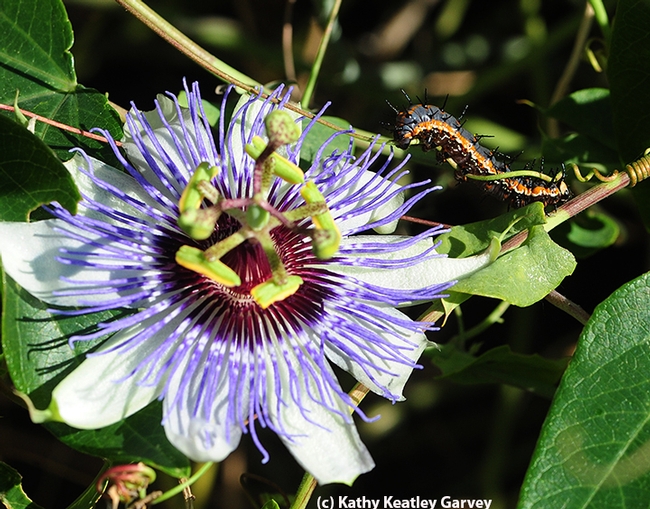
A Gulf Fritillary caterpillar inches away from a passionflower. (Photo by Kathy Keatley Garvey)
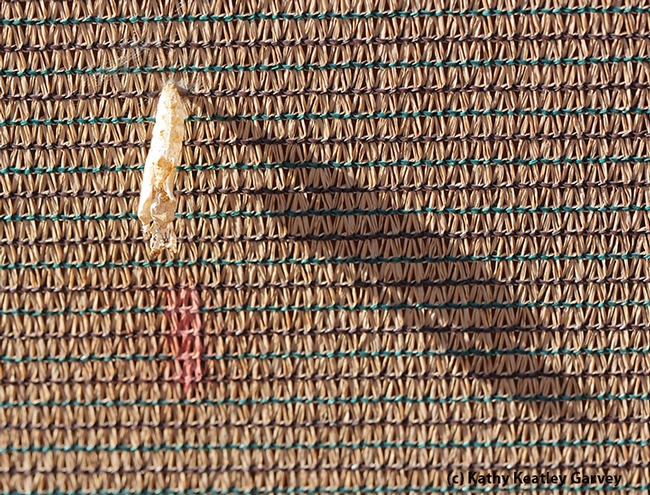
The empty chrysalis of a Gulf Fritillary hangs like a broken chandelier. (Photo by Kathy Keatley Garvey)
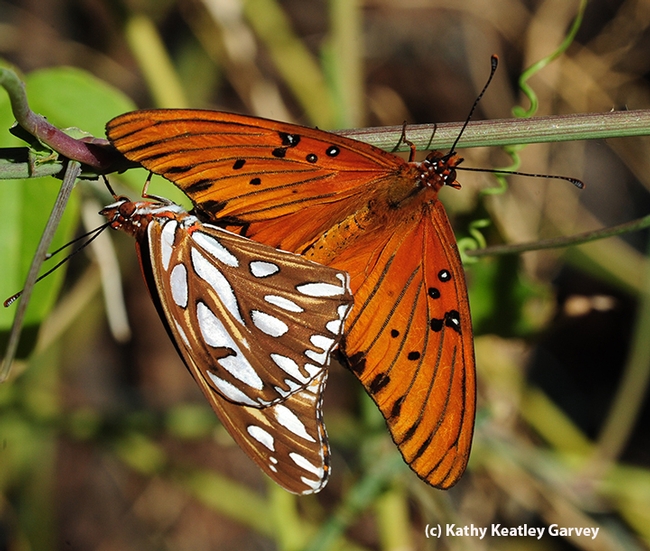
Gulf Fritillaries, aka passion butterflies, mating in the passionflower vine. (Photo by Kathy Keatley Garvey)
Joy to the (Monarch) World
Oh, the joys of rearing monarch butterflies. Not for commercial purposes. For conservation purposes. For a couple of months now, we've been watching...
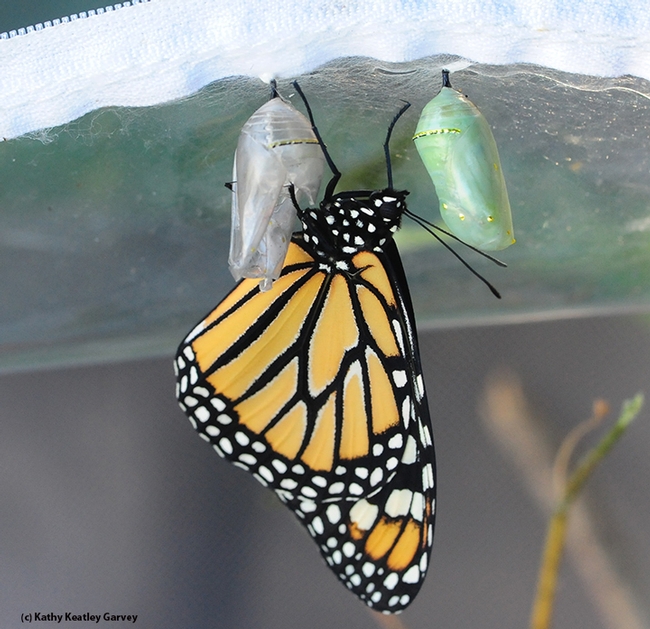
Female monarch has just eclosed. Next to her is a gold-studded jade-green chrysalis. (Photo by Kathy Keatley Garvey)
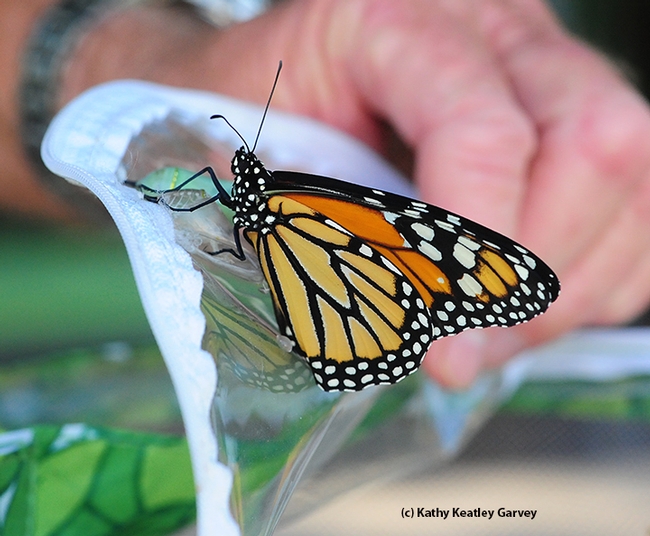
Newly emerged female monarch. (Photo by Kathy Keatley Garvey)
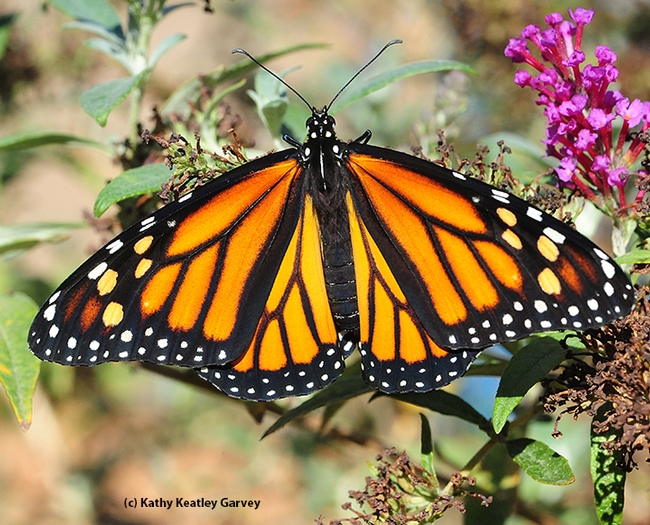
Female monarch spreads her wings on a butterfly bush. (Photo by Kathy Keatley Garvey)
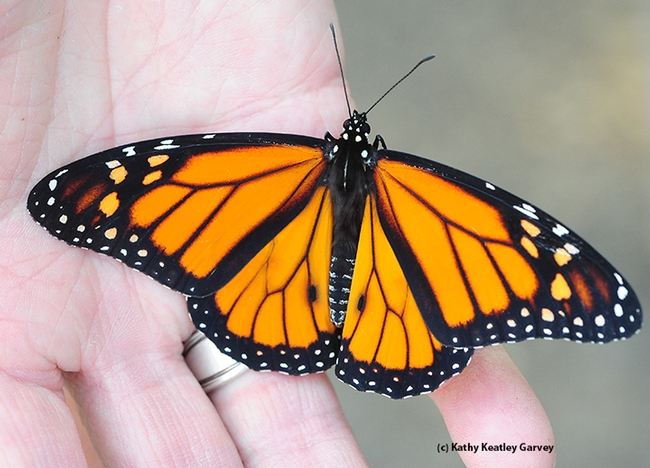
Newly emerged male monarch spreads his wings. Note the black spots on the hind wings, distinguishing gender. (Photo by Kathy Keatley Garvey)
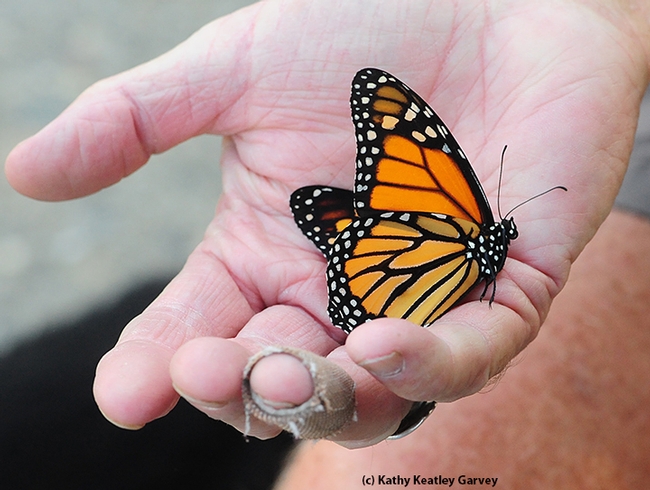
Male monarch ready to be released. (Photo by Kathy Keatley Garvey)
From an Egg to a Caterpillar to a Chrysalis to a Monarch
Have you ever seen a monarch butterfly (Danaus plexippus) lay an egg on her host plant, the milkweed? Have you ever seen a close-up of the egg? The...
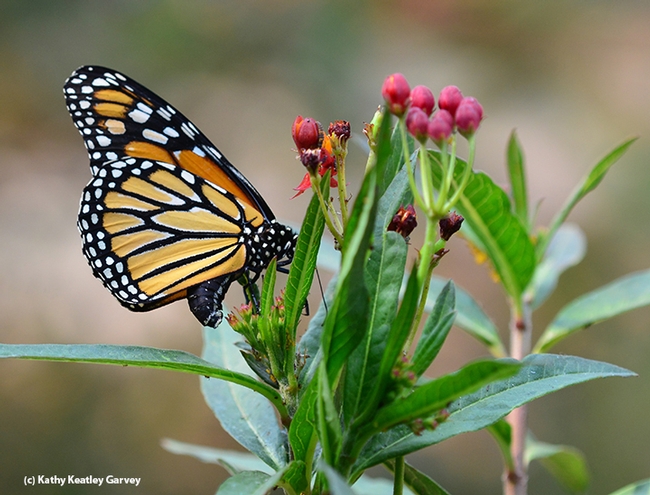
A monarch laying an egg on her host plant, milkweed. (Photo by Kathy Keatley Garvey)
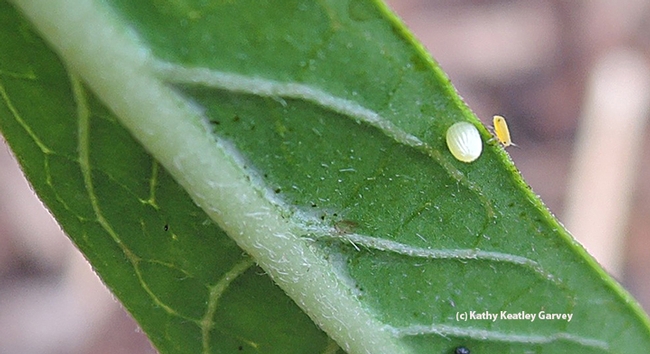
Close-up of a cream-colored monarch egg. Note the oleander or milkweed aphid next to it. (Photo by Kathy Keatley Garvey)
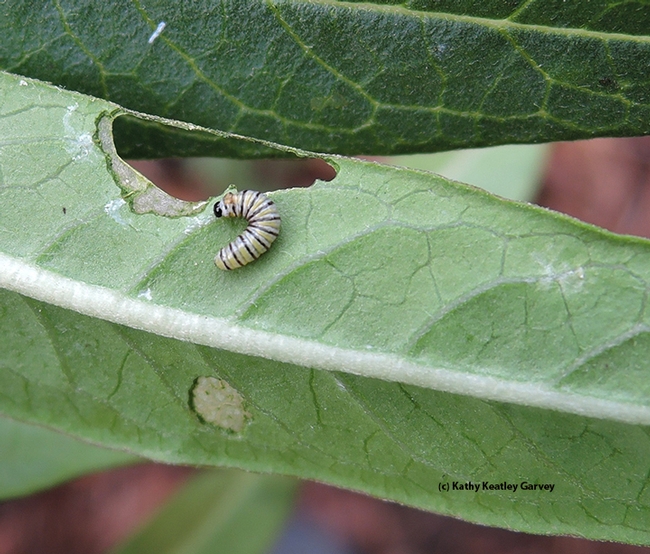
A very tiny caterpillar but it's big enough to start eating holes in the leaves. (Photo by Kathy Keatley Garvey)
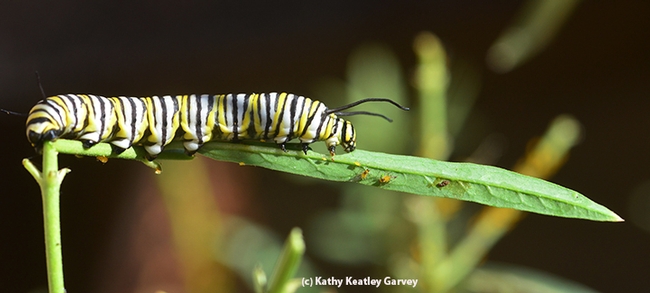
A fifth-instar monarch caterpillar. (Photo by Kathy Keatley Garvey)
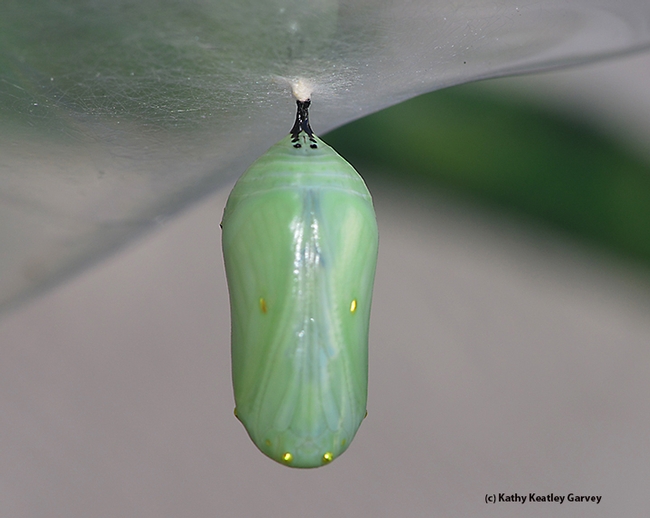
The jade green chrysalid. (Photo by Kathy Keatley Garvey)
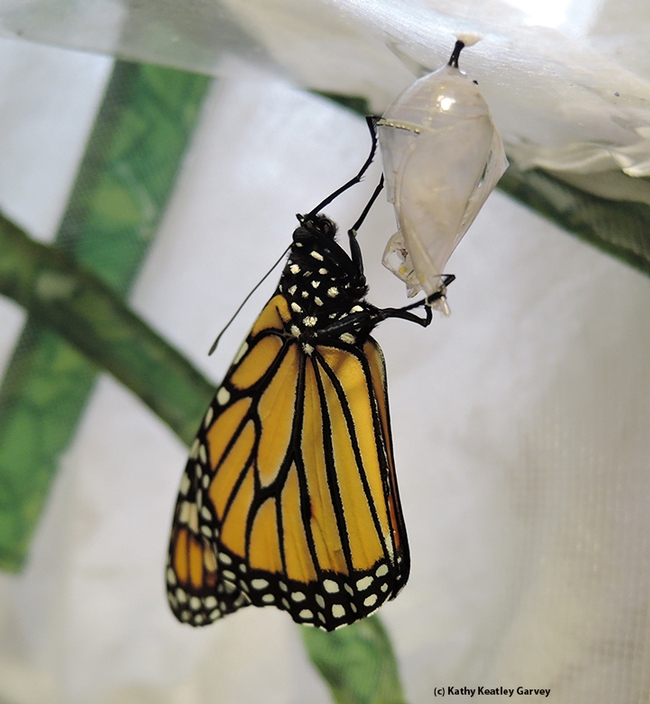
Voila! A monarch butterfly has just eclosed. (Photo by Kathy Keatley Garvey)
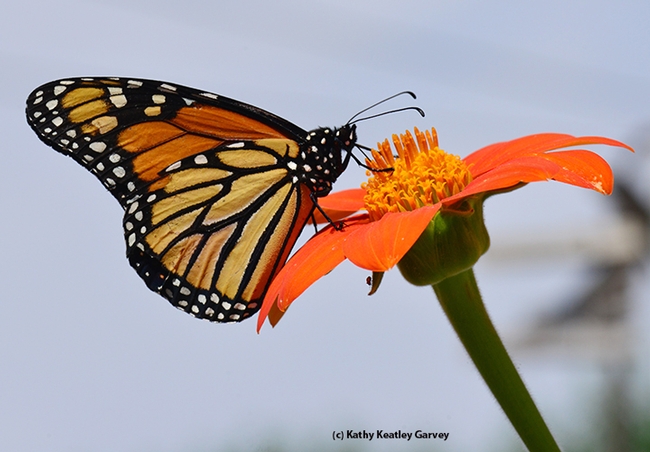
A monarch sipping nectar from a Mexican sunflower (Tithonia). (Photo by Kathy Keatley Garvey)

